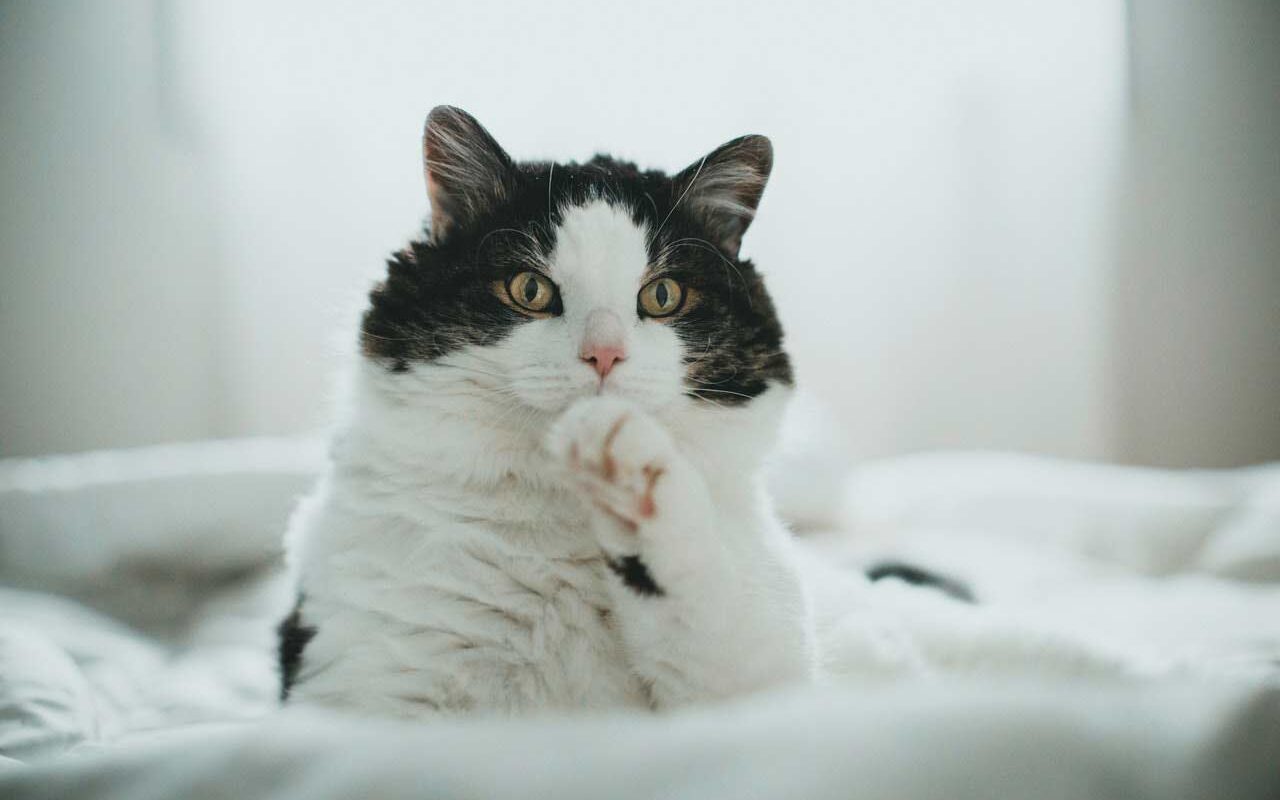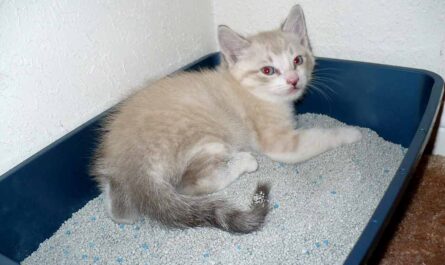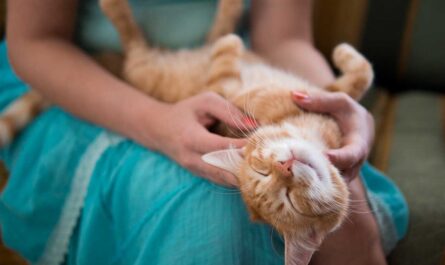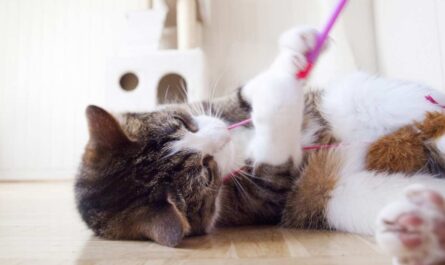How to tell if a cat is in pain from arthritis? How to help them relieve the pain? Identifying signs of pain in cats afflicted with arthritis can be a nuanced task, demanding a discerning eye and a keen understanding of feline behavior. These elusive creatures often mask their discomfort, how to tell if your cat is in pain from arthritis, necessitates a nuanced exploration of subtle indicators that might betray the presence of arthritic pain. Discerning these signs early on is crucial, as it enables pet owners to proactively address the condition and alleviate their feline companion’s suffering.
12 Ways to tell if a cat is in pain from arthritis
Deciphering whether a cat is in pain from arthritis necessitates a holistic and keenly observant approach. Cats, renowned for their adeptness at concealing discomfort, communicate their pain through subtle shifts in behavior, mobility, and interaction. By scrutinizing these nuanced indicators, pet owners can unravel the mysteries of feline arthritis, enabling them to intervene early and provide compassionate care for their beloved companions.
1. Altered Gait and Mobility
In the realm of feline well-being, an unmistakable signifier of arthritic affliction surfaces in the form of a noticeable shift in the cat’s gait and overall mobility. These creatures, celebrated for their inherent gracefulness, may suddenly betray a hesitancy or reluctance, abstaining from activities that once elicited unbridled joy. An observer with a discerning eye may pinpoint a discernible stiffness or a laborious quality in their movements, especially conspicuous when transitioning from repose to activity or adeptly navigating through the labyrinth of obstacles that populate their environment. These nuanced alterations in gait function as poignant signals, acting as a clarion call for a meticulous investigation into the realms of potential arthritic discomfort.
2. Changes in Jumping Behavior
In the tapestry of feline agility and vertical prowess, alterations in a cat’s jumping comportment emerge as a poignant harbinger of arthritic tribulation. A feline companion grappling with the throes of joint inflammation might showcase a discernible reluctance, or even an outright aversion, to catapult themselves onto elevated surfaces. This divergence from their customary aerial prowess could manifest in a perceptible reduction in the frequency of their jumps or, in severe instances, an absolute cessation of this once-effortless mid-air ballet. The spectral transformation in jumping behavior serves as an eloquent testament to the profound impact of arthritic pain on the very essence of feline vitality.
3. Behavioral Changes and Agitation
The cryptic labyrinth of feline behavior, while often elusive, can also be a canvas that subtly reveals shifts in temperament indicative of arthritic tribulation. Cats, under the cloak of pain, may unexpectedly unfurl a tapestry of irritability, showcasing an uncharacteristic level of agitation. A creature that was once the epitome of serenity and composure might now exhibit signs of discomfort through heightened vocalization, restless meandering, or even defensive postures. Keen pet owners must remain vigilant to these nuanced modulations in behavior, unraveling them as potential encoded signals of an insidious undercurrent of arthritic pain.
4. Weight Distribution Anomalies
An astute scrutiny of a cat’s weight distribution unveils valuable clues about its physical equilibrium, particularly when grappling with the clandestine adversary that is arthritis. Cats besieged by joint pain often display a proclivity to favor one limb over its counterparts, orchestrating an intricate ballet of uneven weight distribution in a desperate bid to alleviate the gnawing discomfort. This subtle asymmetry in the act of weight-bearing becomes conspicuously evident during interludes of repose or when the cat adopts a stationary stance, serving as a tangible tableau that elucidates both the affected joints and the magnitude of the distress experienced.
5. Changes in Grooming Habits
In the realm of feline fastidiousness, cats, renowned for their meticulous grooming rituals, may clandestinely amend these behaviors when ensnared by the clutches of arthritic pain. Joints marred by pain may deter a feline companion from executing the customary contortions necessary for grooming, resulting in a perceptible decline in the thoroughness and frequency of self-pampering sessions. Unkempt patches of fur, especially in the nether regions that evade easy accessibility, may emerge as visual testaments to the formidable challenges posed by arthritis. The discerning observer must scrutinize these deviations in grooming habits, elevating them to the status of potential auguries that unveil the presence of an underlying wellspring of discomfort.
6. Decreased Appetite and Weight Loss
The diminution of a feline’s proclivity to partake in meals or the conspicuous wane in its overall appetite form an eloquent dialect that articulates distress—a language that arthritis is not averse to speaking. The throes of pain and discomfort, originating from arthritic joints, may serve as unwelcome deterrents, dissuading the feline from engaging in the customary ballet of feeding behaviors. The consequential reduction in appetite, a harbinger of nutritional imbalances, may cast a shadow that extends to the gradual loss of weight over the sands of time. These subtle oscillations in eating habits demand meticulous vigil, empowering astute pet owners to orchestrate prompt interventions that address the covert undercurrent of arthritic affliction.
7. Litter Box Avoidance or Changes in Posture
Arthritic pain, a pervasive ailment afflicting feline joints, subtly infiltrates even the seemingly routine domain of using the litter box. In the throes of discomfort, cats may manifest an uncharacteristic hesitation, an almost palpable reluctance, in assuming their customary postures for urination or defecation. A discerning observer might notice subtle alterations, such as a lowering of hindquarters or a perceptibly modified stance, serving as cryptic signals of arthritic discomfort during these otherwise mundane activities. Moreover, the coping mechanism of complete litter box avoidance might unfold, a poignant attempt by the feline to mitigate the searing pain associated with the act of squatting.
8. Vocalization Patterns
The auditory tableau of a household, where a feline resident contends with the insidious grip of arthritic pain, undergoes a discernible metamorphosis. Feline vocalization, typically a nuanced symphony of communication, becomes a poignant medium for expressing their discomfort. The feline in distress may augment their vocal repertoire, emitting plaintive meows that resonate with an almost mournful timbre. Alternatively, a cat may resort to defensive measures, punctuating the air with hisses or growls when approached or handled. Decoding these intricate alterations demands a nuanced understanding of the cat’s baseline vocal behavior, providing a key to unlocking valuable insights into their current state of well-being.
9. Sensitivity to Touch
The tactile dimension becomes a poignant barometer of feline arthritic pain, where each touch serves as a potential trigger for heightened sensitivity. Joints ensnared by the throes of arthritis, notably the hips or shoulders, become palpable epicenters of discomfort. A typically serene cat may metamorphose into a creature of heightened vigilance, recoiling or hissing in response to the application of pressure on these afflicted joints. This heightened sensitivity to touch, an almost tactile language of distress, provides astute pet owners with a tangible means to pinpoint the precise locations of arthritic anguish in their feline companions.
10. Changes in Sleeping Patterns
The hallowed realm of feline repose, characterized by extended periods of uninterrupted slumber, becomes a battleground for arthritic discomfort. Cats in pain, besieged by the relentless grip of joint affliction, may stage a quiet rebellion against their once-predictable sleeping patterns. Restlessness infiltrates their nightly ritual, waking becomes a more frequent companion, and the act of settling into a position of comfort transforms into a subtle but telling struggle. The observer, attuned to the nuances of feline behavior, must diligently note these disruptions in the customary sleep routine as surreptitious indicators of the arthritic challenges that beset the cat.
11. Reluctance to Be Handled or Picked Up
The inherent feline predilection for autonomy weaves an intricate tapestry of challenge when attempting to decipher the subtle nuances of arthritic pain. Cats, stoic in their nature, may betray their discomfort through a newfound aversion to the intimacy of being picked up or handled. The act of lifting, how to tell if your cat is in pain from arthritis, an imposition on their aching joints, becomes an unwelcome ordeal, prompting a poignant reluctance to engage in close physical contact. This newfound hesitancy, a silent plea for gentleness, serves as a poignant signal to pet owners, urging them to approach their feline companions with heightened sensitivity and a delicate touch.
12. Environmental Adaptations
The cat, a master navigator of its surroundings, subtly telegraphs its arthritic tribulations through nuanced responses to the environment. A cat, treading with cautious trepidation or exhibiting hesitancy in the face of obstacles, paints a vivid portrait of adaptive coping mechanisms. These subtle environmental adaptations, akin to a feline ballet of resilience, include a newfound affinity for low-impact surfaces and a discernible reluctance to ascend stairs. Scrutinizing these delicate adjustments in behavior becomes a nuanced art, enhancing the observer’s ability to decode the intricate language of arthritic pain woven into the fabric of a domesticated feline’s daily life.

6 Ways to help a cat that is in pain from arthritis
Addressing arthritis in cats involves a multifaceted approach, encompassing vigilant observation, professional consultation, dietary adjustments, environmental modifications, a tailored exercise routine, and, when necessary, how to tell if a cat is in pain from arthritis, appropriate medication. By combining these strategies, pet owners can significantly enhance the well-being of their feline companions, ensuring a more comfortable and fulfilling life despite the challenges posed by arthritis.
1. Recognizing the Subtle Indications of Arthritis in Cats
Arthritis, a condition often overlooked in feline companions, manifests in nuanced ways that demand astute observation from pet owners. The insidious nature of this ailment necessitates a discerning eye for potential signs of discomfort. Cats, once sprightly and agile, may exhibit a disconcerting reluctance to partake in activities that once brought them joy, like the artful leaps and graceful climbs that defined their feline prowess. An additional indicator surfaces in the form of stiffness, particularly pronounced when the cat rouses from rest, a subtle yet telling signal of underlying joint affliction. Moreover, a cat grappling with arthritis may betray signs of heightened irritability or an uncharacteristic lethargy. It is the discerning pet owner, attuned to these delicate behavioral nuances, who is better positioned to identify these subtle cues, leading to the prompt pursuit of compassionate care for their cherished feline companions.
2. Consultation with a Veterinary Maestro
Upon the discernment of potential arthritis indicators in a feline friend, the logical and compassionate next stride is to seek the seasoned counsel of a veterinary virtuoso. A judicious veterinary examination emerges as a linchpin, a necessary step in the labyrinth of diagnosing arthritis with precision and unraveling the intricacies of the feline discomfort tapestry. The astute veterinarian, armed with diagnostic acumen, might advocate for supplementary investigative measures, with X-rays standing as sentinels, revealing the full spectrum of joint damage severity. In this collaborative dance between a vigilant pet owner and a seasoned professional, a bespoke treatment symphony is orchestrated, harmonizing with the cat’s specific needs and orchestrating an effective crescendo of pain alleviation.
3. Crafting Culinary Elixirs: A Specialized Diet for Joint Harmony
In the symphony of arthritis management, dietary modulation emerges as a crescendo, a pivotal movement in the orchestration of feline well-being. Opting for a gastronomic composition, a specialized cat food, becomes a masterstroke, infusing the feline diet with the essential alchemy of omega-3 fatty acids and glucosamine. These nutritional virtuosos, protagonists in the cartilage saga, dance upon the stage, orchestrating an anti-inflammatory serenade. The strategic deployment of this dietary ballet aims not only to satiate the cat’s palate but also to maintain an optimal corporeal cadence, thus alleviating the relentless stresses upon the joints. The discerning conductor of this culinary concerto is the veterinarian, attuning the dietary score to the cat’s unique health opus. Cat accessories on Amazon
4. An Abode of Ease: Tailoring the Environment for Feline Comfort
In the theater of feline well-being, the stagecraft extends beyond medicinal melodies to the physical stage itself. Crafting an environment that cradles a cat afflicted with arthritis is a crucial overture to enhancing its overall well-being. The tapestry of comfort involves carefully considering soft bedding, strategically strewn in easily accessible locales, alleviating the necessity for arduous leaps. The architectural embellishments extend to the installation of ramps and steps, an engineered dance of accessibility that harmonizes with the cat’s movement repertoire, especially if it delights in surveying its kingdom from elevated perches. The spatial symphony, choreographed to accommodate the physical cadence of the cat, metamorphoses into a veritable ballet of minimized discomfort and a symphony of a qualitatively superior feline existence.
5. The Dance of Motion: A Regular Low-Impact Exercise Regimen
Within the confines of arthritis’s restrictive embrace, the pulsating rhythm of life finds expression in the measured cadence of low-impact exercises. A cat, curtailed in its ability to engage in boisterous physical endeavors, must partake in a carefully orchestrated routine. This rhythmic communion involves gentle exercises—controlled play sessions, an interactive dance with toys—intended not to provoke joint pain but to infuse the cat’s existence with an energetic vitality. Striking an equilibrium, a delicate balance between encouraging movement and safeguarding against activities that might exacerbate joint pain is a nuanced choreography. The veterinarian, akin to a choreographer crafting a bespoke dance, tailors an exercise opus that resonates with the individual needs and constraints of the feline protagonist. See why thousands of cats love BoxCat
6. Symphony of Relief: Medication and Pain Management Ballet
In the crescendo of arthritis severity, where pain morphs into a resounding symphony, medication steps onto the stage as a crucial player. Non-steroidal anti-inflammatory drugs (NSAIDs), the virtuoso pharmacological performers, assume the mantle of pain alleviators. Yet, the administration of these medicinal maestros demands a vigilant hand, under the guidance of a veterinary conductor, lest the discord of improper usage reverberate in adverse effects. Beyond the pharmacological sonata, complementary therapies grace the stage—acupuncture and physical therapy, a choreography of holistic relief. In this medicinal ballet, the veterinarian orchestrates a tapestry of pain management, a harmonious ensemble aiming to elevate the comfort and well-being of the feline protagonist.
Other Interesting Articles
- Ocicat Cat Breed Profile: Health, Facts, Traits, Groom, Care
- Ojos Azules Cat Breed Profile: Health, Traits, Groom, Care
- Oregon Rex Cat Breed Profile: Health, Traits, Groom, Care
- Oriental Bicolor Breed Profile: Health, Traits, Groom, Care
- Oriental Longhair Breed Profile: Health, Traits, Groom, Care
- Oriental Shorthair Breed Profile: Health, Traits, Groom, Care
- Peterbald Cat Breed Profile: Health, Traits, Groom, Care
- Pixie-Bob Cat Breed Profile: Health, Traits, Groom, Care
- Ragamuffin Cat Breed: Health, Facts, Traits, Groom, Care
- Russian White Cat Breed Profile: Health, Traits, Groom, Care
- Serengeti Cat Breed Profile: Health, Traits, Groom, Care
- Savannah Cat Breed Profile: Health, Traits, Groom, Care
- Selkirk Rex Cat Breed Profile: Health, Traits, Groom, Care
- Singapura Cat Breed Profile: Facts, Coat, Traits, Groom, Care
- Sokoke Cat Profile, Traits, Health, Facts, Grooming, Care
- Somali Cat Profile, Traits, Health, Facts, Grooming, Care
- Turkish Angora Cat Profile, Traits, Health, Grooming, Care
- Sphynx Cat Breed: Profile, Traits, Health, Grooming, Care
- Turkish Van Cat Breed: Profile, Traits, Grooming, Care
- Toyger Cat Breed: Profile, Traits, Health, Grooming, Care



